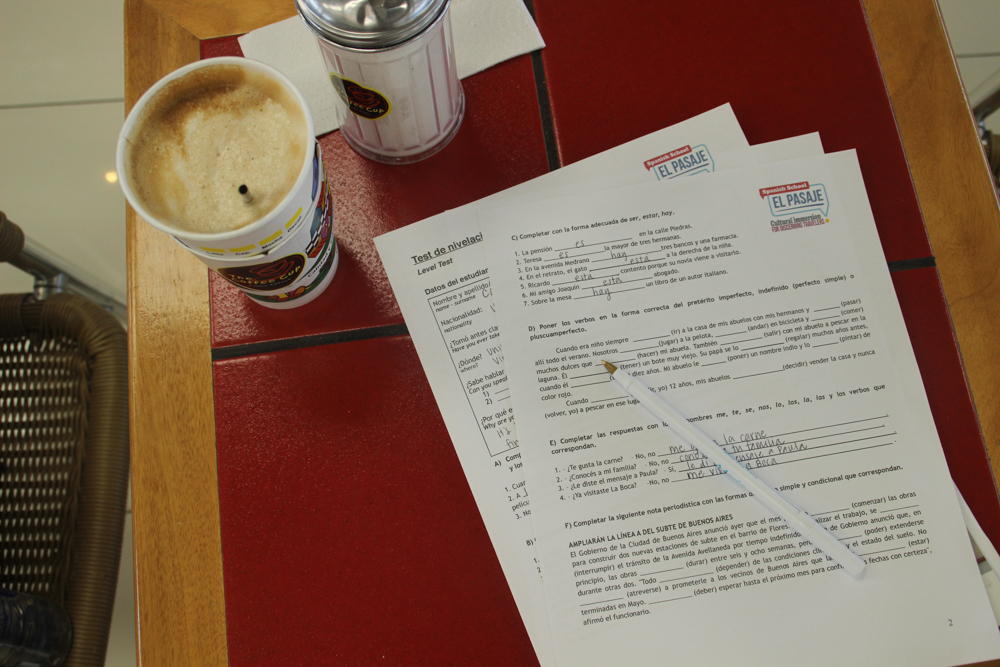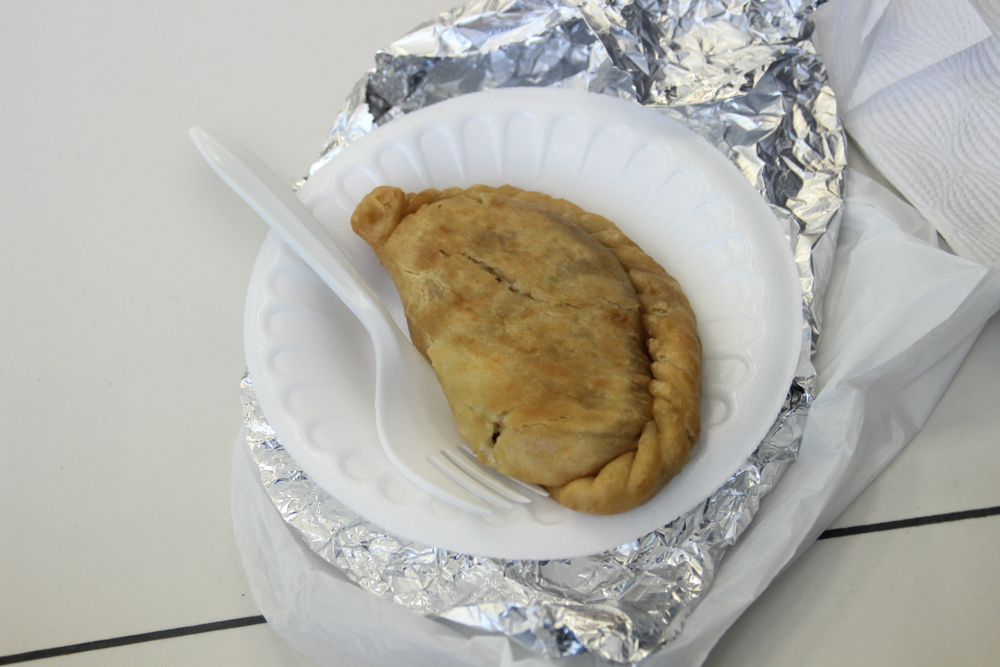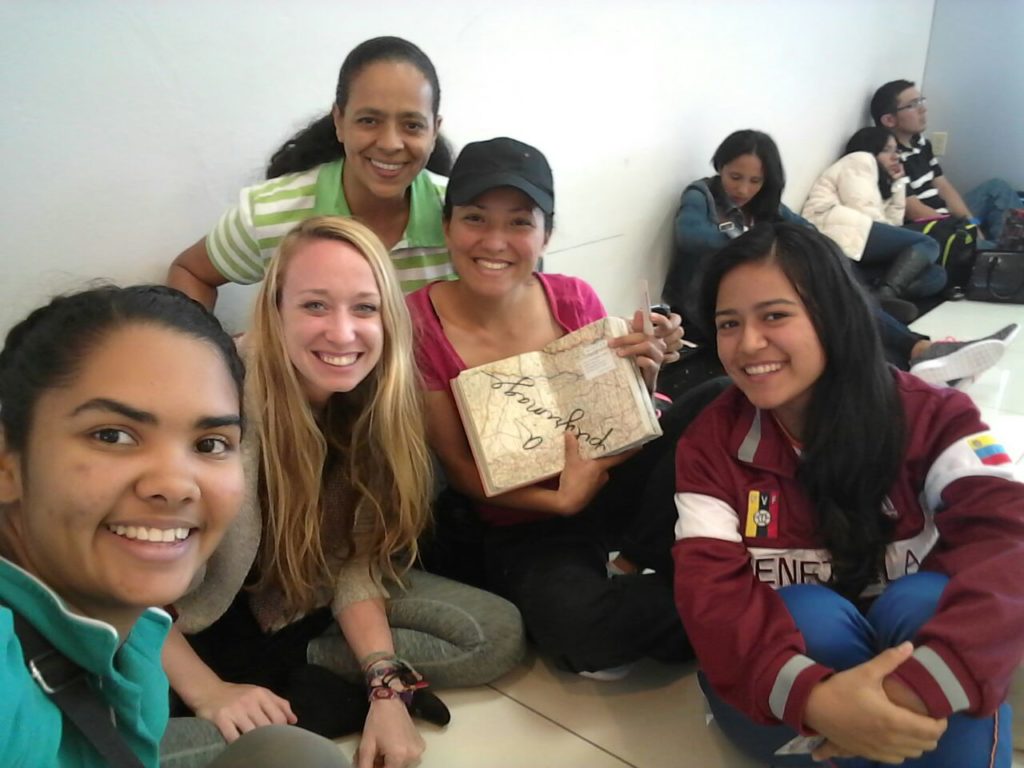“What we write should surprise us,
the way life surprises us.”
— Marty Rubin
When I first learned that my recent flight from San Francisco to Buenos Aires would hold a seven-hour layover in El Salvador, I was quick to make grand plans for that leg of the journey. Having visited the country for a weekend last year, I was excited about the prospect of returning to it — even for as brief an amount of time as seven hours.
“I’m going to get a taxi,” I shared with friends leading up to my departure, “ask the driver to take me to the nearest pupusería, and spend the morning sketching.”
Moreover, I dreamed of the connections I might make through the sketch — that one person I would never have met had I not spent those seven hours sketching in El Salvador.
Ambitious layover plans always seem achievable before we actually depart on a journey, don’t they?
At least, that’s what I am reminded of when I actually land in San Salvador after a red-eye flight from San Francisco. I’ve slept but a couple of hours. My two carry-on bags press deep into my shoulders, taunting me to walk any farther with them than absolutely necessary. And I’m dressed for the wintry weather that awaits me in Argentina — the thought of now traipsing into the humid Salvadorean air in boots and a sweater is far less appealing than it was in the dreamy days of pre-departure bliss.
And so I do what my adventure-seeking soul is always loathe to do — I decide to spend my seven hours in San Salvador inside. I brush my teeth and say a sleepy buenos días to the two women cleaning the bathroom. I order a café con leche, find a seat at a small square table covered in red tiles, and complete the entrance test for the Spanish school I’ll be attending in Buenos Aires. Eventually, I have a sole empanada for lunch, instead of the pupusas I’d long been envisioning.
But mostly I sit silently to myself, not interacting and ruing the connections I’m not making.



Once I’ve finished the test, it’s time for a change of scenery. I shift myself and my two weighed-down bags from the café to a quiet spot along an airport wall. I sit on the floor, my jacket spread out beneath me for a tiny bit of comfort. I open my laptop and pull out my journal for this year, which has accompanied me from San Francisco to Norway and now to South America — a book that I have filled to such an extent since January that its poor spine even broke over the summer.
At last, I begin transcribing entries from my journal to a Word document…and that’s when it happens: the connection I’d all but given up hope of having in El Salvador. I’m flipping through my journal in search of a particular entry when four young women swoop in, point excitedly to my journal, and ask, “Es un diario de tu vida?”
Is it a diary of your life?
I’m so astonished by their approach that it takes me a moment to respond to their question, answering that why yes, it most certainly is.
“Quieren mirarlo?” I ask, holding my journal up to them in invitation.
“Sí, sí,” the four women say together, already dropping their bags and circling around me on the airport’s floor.
For the next twenty minutes or so, we sit there chatting, laughing, and asking each other a flurry of questions, while they keep flipping through my journal. I tell them I’m on my way to Argentina and Uruguay, where I’ll be spending the next few months, and about the book I started in Norway, which I have only just resumed working on right here in the airport. The women tell me that they are all from different parts of Venezuela: from the capital city, Caracas, and from the selva — the jungle.
I ask them for their names — Zindzy, Abigail, Carmen, and Gaiscaly — and when I pull out another notebook to record them in, they immediately exclaim, “You have two diaries?”
The women also share that they are Seventh-day Adventist missionaries, and that they have just spent the last three months volunteering in Honduras.
“How was it?” I ask.
“Increíble,” Zindzy answers.
And then I discover the impetus of their initial approach to me — that they had each tried to keep a journal on the trip, to capture their own perspectives of the experience, but they found it difficult to keep up with everything else going on. When one of them spotted my journal, they wondered if it could be my travel diary.
This time it’s my turn to say increíble — at the way the universe can work, and at the gifts it always seems to bestow on us right when we least expect them.

It’s now been a few days since I arrived in Buenos Aires, and though I’m more than excited to be here, every time I walk its cobblestoned streets — finally comfortable in my tall boots and sweater — I find my thoughts still turning to that serendipitous encounter in El Salvador. For just as the women said goodbye and were about to leave, they knelt back down and said, “One more thing, Candace — we would like to pray for you. Is that okay?”
I smiled, touched by this expression of their faith. I said it was indeed okay and, for a second time that morning, was encircled by the four women. Zindzy began to pray, and though I didn’t catch all of what she said, one phrase stood out — when she prayed for God to “guiar sus pasos.”
To guide her steps.
It’s all too easy to linger in doubt over our decisions — even decisions as small as whether or not to leave an airport on a long layover. But every now and then, I’m grateful for the moments when we suddenly know, without any doubt at all, that our steps have led us in the right direction, to the very place we most need to be.
Which — it just so happened to be for me, one balmy Wednesday morning in El Salvador — was on an airport’s cool tile floor, seated against a wall, hidden away inside…and yet not so hidden after all.



What a wonderful connection!
So good to see your writing again
Thanks so much, Kathe! It hasn’t been my best year for consistent posts, but I’m so glad to hear you enjoyed this story 🙂 Hope all has been very well with you!
Lovely, always enjoy your stories!
Thank you for your kind words, Nikki!
Not gonna lie, first time I read you were going to get out of the airport on a 7-hour layover, I was all like “WHOA. That ain’t a lot of time!” and was excited to read how you did it (I had a 9-hour layover in Panama this past May and was too scared to get out of the airport). But, this story is just as lovely. Argentina sounds like a dream too! Looking forward to your next update.
Great hearing from you, Candace!
Thank you so much for your hello here, Pauline–it is wonderful as always to hear from you! I’ve had some fun with escaping the airport on long layovers before (in places like Amsterdam, Singapore, and even your lovely hometown!), so I thought I might attempt something similar in San Salvador…but I was grateful the universe had other plans for me that morning 🙂 PS – I’ve been excited to catch a few of your latest adventures on Instagram and am so thrilled to see where you’re currently exploring…enjoy!! xo
What a lovely story! I love reading about connections like this, and I’m glad your layover turned into such a great experience. I hope you are having a great time in Argentina, and I can’t wait to read more! Sending you hugs from Memphis xx
Thank you so much for your kind words here, Veena! How have you been?? Please know I’m sending you a big hug from Buenos Aires this weekend, and hope all is going so well for you in Memphis! xo
What a lovely experience!
It truly was, Serena! Thanks so much for reading and saying hello 🙂
Love your sketches!
Yamuna | http://www.thetomatolife.com/what-is-normal/
I’m so sorry just to see your comment, Yamuna, but thank you! 🙂
Connections with people are what make travel so special. What a lovely turn of events.
I couldn’t have said that better myself 🙂 I’m so glad you enjoyed this story as well, Joan!